Have you ever seen the Aurora Borealis? Otherwise known as the Northern Lights?
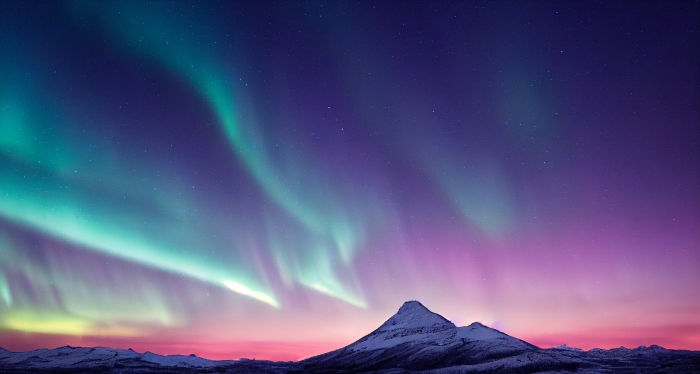
This happens because of an interaction between solar winds and the magnetic field of the Earth.
Let's learn about them!
First, the Earth's magnetic field! The Earth has its own magnetic field - a bit like a bar magnet does. We can visualise the field like this.
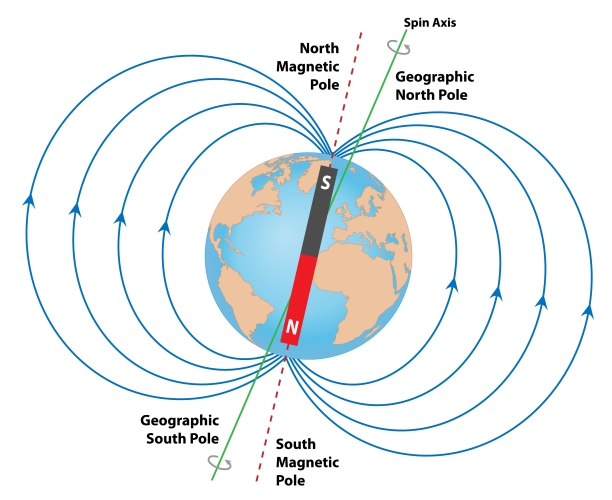
The Earth does not have a big magnet inside it! But we can visualise it this way to make it easier to understand.
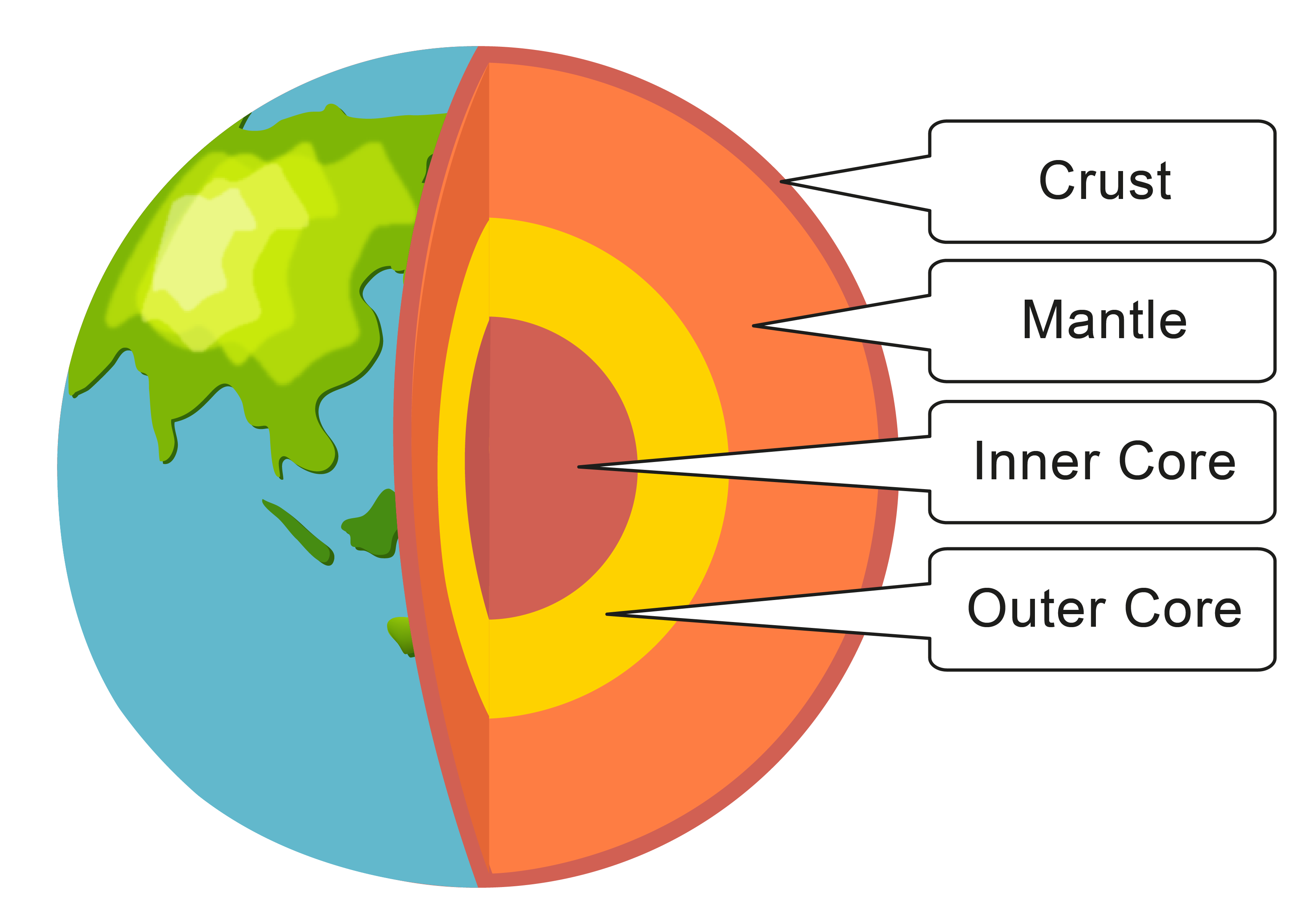
An important part of the structure of the Earth is the molten outer core. This internal layer contains a lot of iron, and because it is molten, can move and flow.
As the Earth spins, the moving iron causes a magnetic field.
The shape of the magnetic field of the Earth is very similar to the shape of a bar magnet's magnetic field. The field lines are shown, and the lines are closer together in regions where the field is strongest, near the poles.

Did you notice the direction of the 'magnet' in the centre of the Earth? What we call the 'North Pole' actually behaves like the south pole of a magnet!
Compasses always point towards this point, which we call the 'North Magnetic Pole'.
Earth isn't the only planet with a magnetic field - gas giants like Jupiter often have very strong magnetic fields. This is theorised to be caused by the movement of metallic hydrogen in its outer core.
Mars does not have a magnetic field like the Earth because its internal structure is significantly different to the internal structure of the Earth.
So, the structure of a planet plays a big role in whether or not the planet has a magnetic field!
So, what causes the Aurora Borealis?

It is a combination of activity on the surface of the Sun, and the way the Earth's magnetic field works!
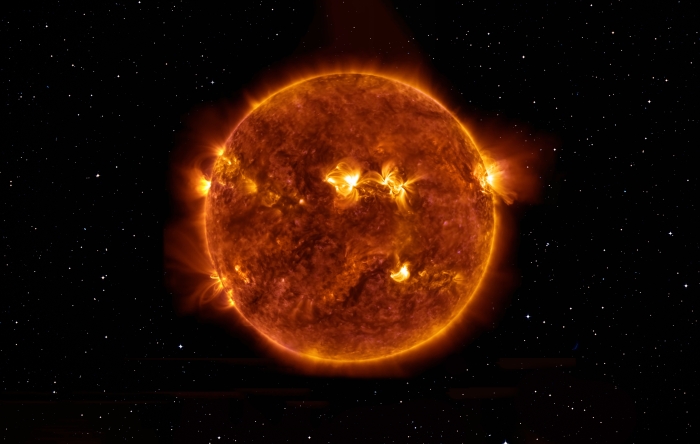
Storms on the surface of the Sun can produce huge amounts of charged particles. These particles can travel massive distances through the Solar System, and some of them reach the magnetic field and atmosphere of the Earth.
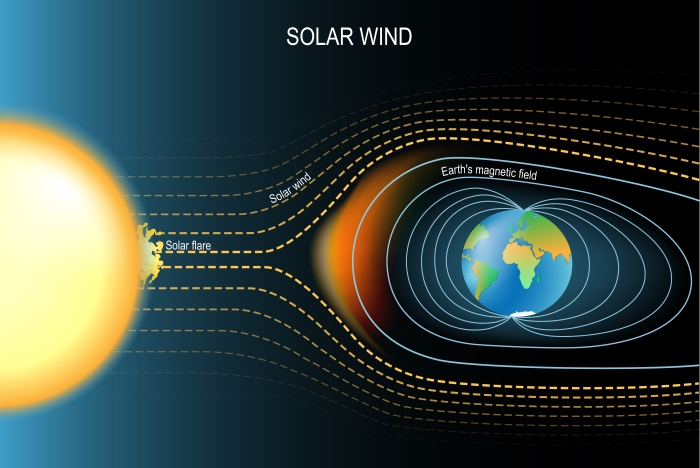
The magnetic field of the Earth deflects a lot of these particles in the 'solar wind' but it also pulls some of them into the atmosphere, particularly at the North and South Poles.
These particles from the Sun interact with particles in the atmosphere, transferring energy and causing different coloured lights to be emitted!
This is called the Aurora Borealis, or Aurora Australis in the southern hemisphere.
You can even see the aurora from space! This photo shows what the aurora looks like from the international space station!
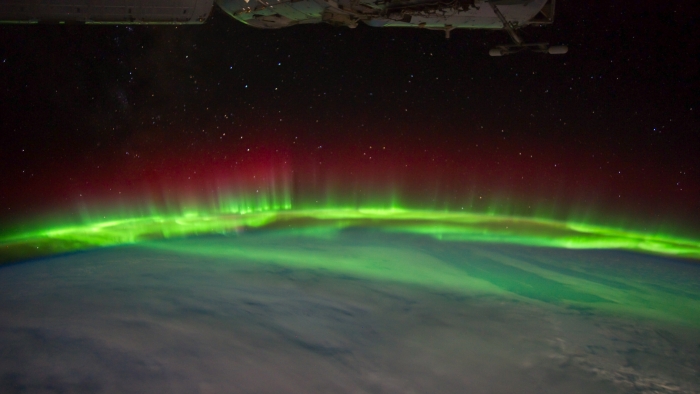
Now let's try some questions.







